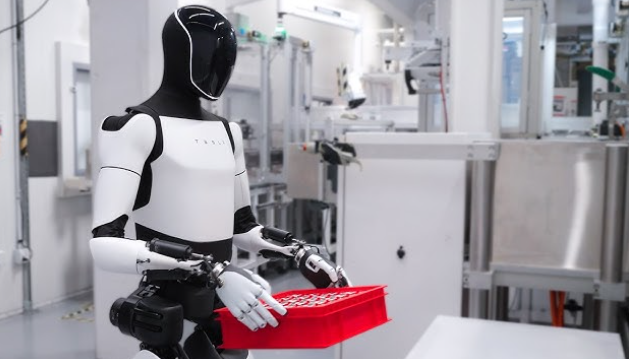Latest Positions: Mobility, Fintech, and Semis PLUS Trade Alert...

First off, we are buying some Pfizer (PFE) today with the stock down about 10% from its recent high of near $30. We've owned PFE off and on for the last year and we continue to like the setup here. We think this is a good defensive stock to own that is really cheap and has a lot of upside potential that no one is pricing in right now. Pfizer is working on a once-a-day pill to compete with Ozempic (no shots!) and it also recently closed its acquisition of Seagen which is one of the cutting-edge cancer pharmaceutical companies. If Pfizer can get any of its 113 drug candidates off the ground in the next year or so, this stock could really get going again. Plus we get a 6.25% dividend while we wait.
We've now got second quarter earnings reports behind us and it's time to update our Latest Positions.
Here is Part 1 of the list of my latest personal portfolio positions and most of the hedge fund positions with updated commentary and ratings for each position. Also, we’ll do this week’s Live Q&A Chat tomorrow (Tuesday, June 18, 2024) at 12:00 pm ET in the TradingWithCody.com chat room or as always you can email your questions to support@tradingwithcody.com.
The ratings for each stock go from 1 to 10, 1 being “Get out of this position now!” and 10 being “Sell the farm, I’ve found a perfect investment.” The positions that are bolded are those that I consider to be “core” holdings and am unlikely to ever sell out of them entirely.
Longs –
- Forever assets and other permanent holdings –
- Media, hedge fund, and other private investment/business holdings (9+ because betting on yourself and running a business is always the best bet)
- Real estate, including the ranch I live on in NM (6)
- Physical gold bullion & coins (8)
- (Driverless/EV/Mobility Revolution) –
- Tesla (TSLA) (8+) -- Even though we have Tesla under the Driverless/EV/Mobility Revolution(s), it's also arguably one of the best stocks for The AI, Robotics, Solar, Battery, and even Semiconductor Revolutions. One of the reasons we like Tesla so much is that it has the upside potential of a startup without the startup-like risk. The company's traditional car business (the S3XY lineup) is now a $85 billion per year business kicking off about $10 billion per year in operating cash flow. Tesla also has roughly $20 billion in net cash on the balance sheet. There is almost no other large company on the planet with multiple multi-trillion dollar kickers like Tesla that is already quite profitable and won't need to raise more capital to accomplish its goals. Moreover, we think the market is overly discounting the value of the car business. Analysts are predicting virtually no topline growth for Tesla this year (1.8% according to Yahoo finance), and we think there is a good chance that Tesla could beat those dismal growth projections. First, Cybertruck production continues to ramp reaching a rate of 1,300 Cybertrucks per week last week, with that number likely climbing to 2,500 Cybertrucks per week by the end of the year. If Tesla sells 50,000 Cybertrucks this year at an average price of $100,000, that would be $5 billion in extra revenue this year (or about 5.2% of 2023 revenue). Tesla is also producing the Semi in low volumes right now with plans to ramp up production over the next twelve months. If Tesla can sell even 15,000 Semis this year at an average price of $180,000, that would be another $2.7 billion in revenue for Tesla (or 2.8% of 2023 revenue). Even if revenue for S3XY cars is flat in 2024, we're talking about 8% revenue growth for Tesla just based on Cybertruck and Semi, which is 4.4x more growth than analysts are currently predicting. Throw in the fact that take rates for FSD are likely climbing steadily with each improved version of FSD (plus Tesla may soon be allowed to sell FSD in China), and we think there is a lot of room to the upside for Tesla's revenue in 2024. We wouldn't be surprised if Tesla ended up growing revenue 10-15% in 2024 assuming the economy stays intact for the rest of the year.
- Uber (UBER) (7) – Uber continues doing what Uber does and we think this will be another great year for the company. Uber is driving growth by continually adding more products to its platform and by expanding internationally. Total trips were up 21% y/y in the first quarter and Uber now has 7.1 million drivers on its platform.
Over the next three years, Uber expects bookings (which is the total amount consumers like you and I spend on the platform) to grow by in the mid- to high-teens, with adjusted EBITDA growing at a 30-40% CAGR over that time.
If the economy keeps doing what it's been doing, there is only one reason that Uber wouldn't achieve those targets: Tesla Robotaxi. We've expended many a brain cycle trying to decide what to do with Uber in light of Robotaxi's potential to disrupt Uber's entire business model. It's still unclear exactly how Uber will fit in a Robotaxi world, but we have enough confidence in the company to stick with it at least until we find out more from Uber and/or Tesla on how the two will work together (or not). There is obviously a big risk here that if Tesla refuses to work with Uber in any form, Uber collapses but don't think that is an very likely possibility. The more likely bearish outcome is that Tesla and Uber work together but Tesla also owns and operates its competing ridesharing app which forces Uber to cost pricing to stay competitive and ultimately hurts margins/growth rates.
- (Fintech Revolution)
- Robinhood Markets (HOOD) (7+) – It's Robinhood vs. Everyone Else right now. The company is firing on all cylinders lately as crypto has come back there is a lot more active trading in the equity markets as well. But this isn't the same Robinhood that we all came to know during the first iteration of Meme Stock Mania that occurred in 2020/21. No, today Robinhood has diversified its user base substantially with its IRA and high-yield cash offerings that are bringing more sophisticated users with larger accounts to its platform. As of Q2 of this year, the average customer at Robinhood has $5,137 on the platform, compared to $4,317 at the end of 2021 (peak bubble).
Moreover, average revenue per user (ARPU) went from $64 to $104 over that same time.
Robinhood has also kept costs under control, with profitability expanding significantly over the last few years. For example, Robinhood lost $420 million in the fourth quarter of 2021 compared to a profit of $158 million in the most recent quarter. Importantly, Robinhood continues to drive growth through innovation and international expansion. The company recently rolled out a new credit card with 3% unlimited cash back and announced a 1%, no-limit match on all deposits into the platform. While there are a handful of Robinhood knockoffs out there, there is really nothing else quite like Robinhood in today's financial services industry. Unlike most of Wall Street, Robinhood is constantly finding new ways to give money back to its users instead of constantly nickel-and-diming them. - Toast (TOST) (8-) – Toast is a unique cloud/fintech stock with a really interesting business model and compelling growth story. Many of you have probably seen Toast's point-of-sale (POS) hardware in local eateries. The hardware is similar to what you might see from Block's (SQ) Square or Fiserv's (FI) Clover. However, Toast offers much more than just POS hardware. In fact, the POS hardware is simply a loss leader that the company uses to get its products into as many restaurants as possible.
Toast is the only software company that is focused entirely on the restaurant company. Its software helps with everything from Payroll Management to Online Orders to Inventory Management to Marketing.
Toast's goal is to be the sole software provider for every restaurant allowing the owners/managers to seamlessly run their business in a more profitable manner. Toast currently has very low margins for the software industry (roughly 22% gross margins), but those margins are climbing as more and more restaurant that bought Toast hardware are starting to buy Toast's high-margin software. Toast has used its hardware loss-leader strategy to penetrate over 100,000 restaurant locations in the US. We expect that Toast's gross margins will trend toward 35%-40% over the next few years and the company will grow topline around 25% per year. If it does that, Toast looks very cheap today.
- Robinhood Markets (HOOD) (7+) – It's Robinhood vs. Everyone Else right now. The company is firing on all cylinders lately as crypto has come back there is a lot more active trading in the equity markets as well. But this isn't the same Robinhood that we all came to know during the first iteration of Meme Stock Mania that occurred in 2020/21. No, today Robinhood has diversified its user base substantially with its IRA and high-yield cash offerings that are bringing more sophisticated users with larger accounts to its platform. As of Q2 of this year, the average customer at Robinhood has $5,137 on the platform, compared to $4,317 at the end of 2021 (peak bubble).
- (Semiconductor Revolution)
- NVIDIA (NVDA) (7-) -- NVIDIA is the clearest winner of the AI Revolution at this moment. As Microsoft, Amazon, Meta, Google, Tesla, and others continue to poor billions into building/upgrading data centers for AI, NVIDIA will continue to grow. Moreover, a large number of non-big-tech organizations are starting to buy NVIDIA GPUs, including hundreds of startups and even governments like Japan, Canada, and France. NVIDIA shifted the compute paradigm with its concept of "accelerated computing," and we are not sure that this trend is going to reverse anytime soon. The old model of generalized compute, powered by CPUs from the likes of Intel and AMD, is here to stay but we're not sure it's going to return to secular growth or anything anytime soon.
And even as Intel, AMD, and others have been trying to catch NVIDIA for well over a year now, it seems like NVIDIA's lead has actually grown over that time!
NVIDIA is moving to a 1-year "rhythm" for new chips and given NVIDIA's Kurzweilian speed-up of Moore's law, the performance gains we expect to see over the next five years or so from NVIDIA will be astounding. The risk to owning the stock at this moment is that much of the above is probably close to being priced in. That means that any kind of negative news or a slowdown in revenue growth or a decline in margins would probably severely impact the stock.
That said, we are sticking with our average-sized NVIDIA position in the hedge fund and might look to add more if it pulled back 20%-30% from these levels. - Taiwan Semiconductor (TSM) (7) -- And who is it that actually builds all of those aforementioned amazing NVIDIA chips? Of course, it's our friends over at TSMC.
It's hard not to own TSMC these days as it is such a clear winner from the AI Revolution and it's not priced quite as high as most of the other semiconductor companies, including many of which haven't really seen the kind of growth we would have expected given such a Revolutionary technology like AI.
TSMC's revenue in April was up over 60% y/y for example. However, for many years TSMC traded at a huge discount to American semiconductor firms because of geopolitical risk stemming from TSMC's proximity to China. As this semiconductor bubble has gotten even larger (and it is a bubble my friends), that discount has slowly but surely gotten closer to evaporating. Of course, if TSMC was an American company it would probably trade at 2x where it is currently, but that is 2x an already slightly-bubbled-up valuation. TSMC use to trade around a 8-12 P/E and today it trades at 28x 2024 earnings estimates.
We will continue to hold our TSMC and might be buyers if it gets close to $120 again.
- NVIDIA (NVDA) (7-) -- NVIDIA is the clearest winner of the AI Revolution at this moment. As Microsoft, Amazon, Meta, Google, Tesla, and others continue to poor billions into building/upgrading data centers for AI, NVIDIA will continue to grow. Moreover, a large number of non-big-tech organizations are starting to buy NVIDIA GPUs, including hundreds of startups and even governments like Japan, Canada, and France. NVIDIA shifted the compute paradigm with its concept of "accelerated computing," and we are not sure that this trend is going to reverse anytime soon. The old model of generalized compute, powered by CPUs from the likes of Intel and AMD, is here to stay but we're not sure it's going to return to secular growth or anything anytime soon.
That’s it for now. More to come tomorrow!
Remember: I wouldn’t rush into a full position all at once in any of these stocks or any other position you’ll ever buy. Patience and allowing the market and time to work to your advantage by buying in tranches is key. Maybe 1/3 or 1/5 of whatever you might consider to be a “full position” in any particular stock. And I wouldn’t ever have more than 5-15% of your portfolio in any one stock position at any given time. The younger you are and/or the higher the trajectory of your career income, the more concentrated and risk-taking you can be with weighting in your portfolio. But spread your purchases and your risk out over time and over several positions no matter your age or risk-averse level. Scaling into a position using an approach of buying 1/3 or 1/5 tranches over time is how I build my personal portfolio positions, but there’s no scientific way to go about investing and trading. Sometimes you have to pay up for the latest tranche but I try to be patient and wait for a temporary sell-off to add to the existing position.
** NOTE FOR NEW SUBSCRIBERS:
If you’re new to TradingWithCody or if you’ve been a subscriber for a while but haven’t acted on much of my strategies yet and/or if you haven’t been in the markets, and you are trying to put some money to work while the markets have been rallying this year, what should you do now?
Before you ever make any trade, step back and catch your breath before moving any money anywhere. Rank your positions and your whole portfolio and make sure you’re not about to make any emotional moves with your money.
If you haven’t yet read “Everything You Need to Know About Investing” then spend a couple of hours doing so, please. It’s a quick read but chock-full of important ideas, concepts, and strategies that amateurs and pros alike should understand.
Then, take a look at my own personal portfolio’s Latest Positions and slowly start to scale into some of the ones you like best and/or the ones I have rated highest right now. I’d look to start scaling into a few of the many stocks in the Latest Positions that are at all-time highs along with a couple that we’ve recently featured in our Trade Alerts that I’ve personally been scaling into.
Disclosure: At the time of publication, the firm in which Mr. Willard is a partner and/or Mr. Willard had positions in some of the positions mentioned above although positions can change at any time and without notice.




